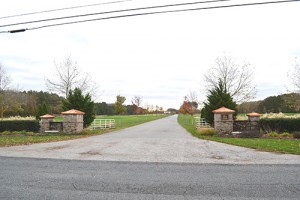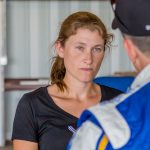
BERLIN – With plans for an apartment complex on Seahawk Road, the sale of two large properties at the edge of town and a development proposal for the Bay Club, it’s easy to wonder just how large Berlin can grow.
In 1990, the town’s population was 2,600. By 2010, that number had nearly doubled, with just under 4,500 residents calling Berlin home. While growth can be a good thing, increasing the town’s tax base and infusing money into the local economy, some residents are concerned that it will bring too much change to what they consider
“America’s Coolest Small Town.”
“We need to protect this small town,” Council member Lisa Hall said. “Once it’s gone it’s gone.”
Potential For Growth
According to town staff, Berlin currently has 327 infill lots — parcels where development is already planned but hasn’t yet occurred. Included in that number are lots in Walnut Hill, lots in Decatur Farms and lots in Austin Acres, among others.
Dave Engelhart, the town’s planning director, said that while there were infill lots in the town’s developments, the overall number included a significant number of units at projects that had been proposed but had not yet occurred.
“There’s a lot of ‘what ifs,’” he said.
In addition to those parcels, thanks to the recent annexation of the property on Seahawk Road, the town is also set to add potentially as many as 700 apartments to its list of homes. Developer Blair Rinnier got approval earlier this week for a text amendment that will enable him to move forward with the first 150-unit phase of the project. He expects the first apartments to open during the summer of 2017.
They’ll be just across the highway from the new Arby’s and Royal Farms set to be built at the intersection of Route 50 and Friendship Road. Plans for those stores were approved earlier this year.
In addition to the already underway projects, a local developer has expressed interest in turning the Bay Club, the golf course just outside of town, into a high-end residential community. In June, attorney Hugh Cropper, on behalf of the Carl M. Freeman Companies, approached Berlin’s mayor to discuss the idea of redeveloping the 36-hole golf course on Libertytown Road into housing community with high-end homes being discussed. The 460-acre property, which is currently served by a septic system, would have to be annexed into Berlin or arrange to purchase water and sewer service from the town.
Though it’s nothing more than hypothetical at this point, the proposal has got residents talking. Hall says that between the already approved projects and the looming possibilities presented by the Bay Club, Davis-Taylor Farm and Beach Club, major changes could be in store for Berlin.
“I want people to start paying attention,” Hall said. “If they don’t, we’ll have 20,000 people in this town.”
Comp Plan Outlines Growth
Hall maintains that residents have said time and again they don’t want Berlin to lose its small town feel. While it’s an opinion that was shared by those who participated in this year’s strategic planning sessions, it was also laid out several years ago when the town did its most recent comprehensive plan. The plan, which was published in 2010, outlined citizens’ desire for historic preservation, the minimization of sprawl and the preservation of open space. In a survey referenced in the plan, a majority of respondents (of which there were 420) suggested 25 homes or less per year was a reasonable rate of growth, though more than a third of respondents said they thought fewer than 10 new homes a year would be reasonable. The top goal identified in the section of the plan devoted to land use was to preserve the character of the community.
The comprehensive plan, which predicts that Berlin will have a population of 5,522 people in 2030, states that the town has ample capacity within its existing limits to accommodate future growth. It does, however, identify several growth areas — along Route 346 and Route 113 to name two — that would allow for more development. Those areas aren’t necessarily the same ones delineated in Worcester County’s comprehensive plan.
“Per the County’s Comprehensive Plan, the County is directing 2,910 potential new housing units to Berlin through the year 2025, with the assumption that more dwelling units will follow,” Berlin’s comprehensive plan reads. “Per the vision of this plan, the 2,910 Residential Unit Targets (RUT) discussed in the County’s Plan is the maximum number of residential units Berlin is interested in bringing to its community … Continuous growth will lead to the eroding of Berlin as its own unique community.”
The Bay Club, for example, is not listed as a growth area in Berlin’s comprehensive plan. The county’s comprehensive plan, however, designates both sides of Libertytown Road as a growth area for Berlin. Areas on Old Ocean City Boulevard and land near Stephen Decatur High School are also identified for potential growth. Properties, however, don’t have to be specifically identified in the plan to be developed. The Seahawk Road site being developed by Rinnier, for example, was referenced as a possible growth area in Berlin’s comprehensive plan but was not a part of the county’s growth area for Berlin. It was nevertheless annexed into the town for development.
Ed Tudor, the county’s director of development review and permitting, said the growth areas in the plan were based on specific requests from town officials at that time.
What’s Next?
With the recent sale of the Davis-Taylor farm — which has already been annexed into Berlin — and the Beach Club — which is adjacent to the annexed farmland — there’s no doubt future growth will remain a hot topic in Berlin. That, Mayor Gee Williams says, is why the town has hired Environmental Resources Management (ERM) for municipal planning services. On Monday, the council approved a $46,000 contract with the company.
Williams said ERM would host a series of community workshops, probably in January, to gauge public opinion on future growth in Berlin.
“What kind of vision do we have for the town?” Williams said.
He said that was important issue to consider as the economy improved and development in the Berlin area increased.
“As the market recovers, we need to have a handle on the problem and a couple hands on the steering wheel so we’re directing that growth,” Williams said. “We have to have a vision and a plan.”
He believes that will ensure that Berlin’s charm is protected while growth is permitted.
“We’re not trying to become the next Salisbury,” he said. “We want to become a better Berlin.”

